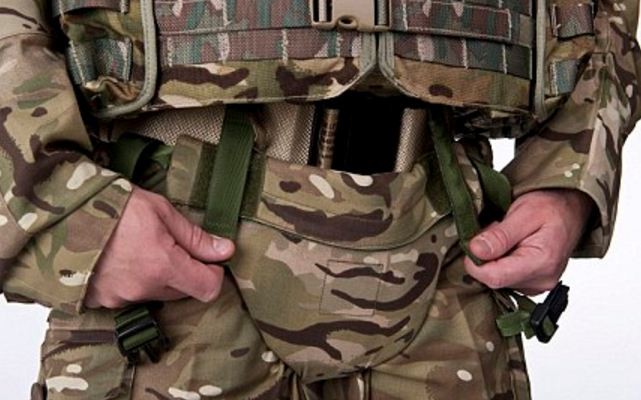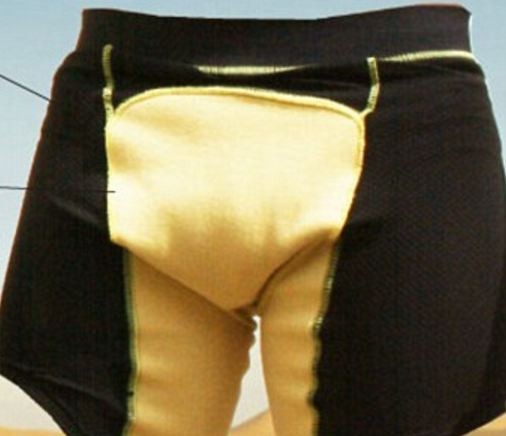Personal protection for U.S. soldiers on the battlefield reached a new "low" with a new and better to way to protect the genital area from the high-speed debris flung outwards by explosions.
The U.S. Army has patented a new design for a harness that better protects the groin and femoral arteries from blast debris. This new "down under" protective gear is in addition to the existing "ballistic groin protection" gear, jokingly referred to by troops as "combat cod pieces," U.S. infantry wore in Iraq and Afghanistan beginning 2011.
Designed at the Natick Soldier Research, Development and Engineering Center, the new protective harness is worn outside the trousers and also helps prevent debris from an explosion from embedding in and around the groin.
"Such injuries can be so severe that repeated surgeries are often needed to remove the debris, leading to extreme discomfort as well as health and hygiene issues," said the Army. "The harness has also been adapted to provide fragmentation protection."
The harness uses multiple layers of Kevlar that alternate as they overlap to provide protection. The resulting design hugs the body without hindering movement.
The groin protection gear now in use is made of Kevlar and weighs less than one kilogram. They're designed to be rolled up when not in use.
On patrol, a soldier unfurls the armor between his legs and snaps it into place. US troops also wore "ballistic underwear" in Iraq and Afghanistan to give them additional protection against roadside bombs or IEDs.
This underwear, otherwise called "ballistic boxers" is made from heavy silk and look like professional cycling shorts. They're specially made to protect soldiers' genitals from damage when sand or debris shoots up at them after an explosion.
The silk boxers, which are treated with antimicrobial agents, also help to protect injured soldiers from wound infections. British troops in both these war zones also used the same type of protection.




























